6. Inseparable yet individual: reeds and ligatures
Reeds
The reeds for clarinet and saxophone mouthpieces are made from the giant cane usually found in the reed beds of southern France and Spain. Different thicknesses of reed are available, the range going from 1 to 5 with up to 3 intermediate thicknesses, depending on the manufacturer.
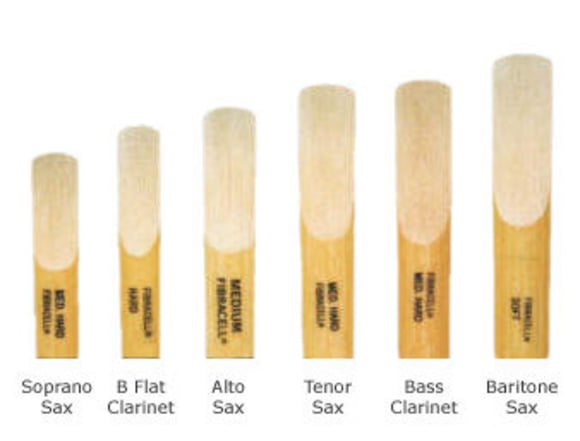
Overview of reeds
The disadvantage is that there is no norm for the thickness, i.e. a number 2 reed can greatly vary in its playing characteristics depending on the manufacturer.
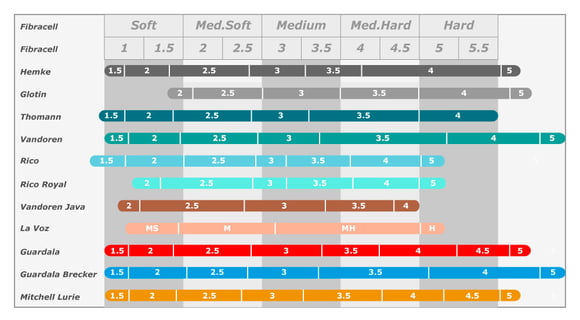
Overview of the different scales
The reed is the instrument's means of generating sound, often called its soul. A bad or the wrong reed can greatly diminish your joy in playing your instrument.
Thinner reeds, also called softer or lighter reeds by musicians, can more easily create softer sounds but the quality of their sound may be inferior and it is easier to overblow when playing a thin reed. Thicker reeds, also called hard, can make for difficult intonation but allow greater volume and, particularly for soloists, greater expressiveness. A band musician playing with a thicker reed must be very skilled at controlling the sound.
Many musicians optimize their reeds in order to create an even better sound. There are two possibilities. Sanding the entire reed surface, or parts thereof, renders the reed thinner, which facilitates easy play. If the reed is too thin, it can be thickened by slightly shortening the front tip.
However, the choice of reed is dependent not only on the playabiliity but also on the mouthpiece. A basic rule is that the larger the window, the lighter the reeds should be, and vice-versa: the smaller the window, the harder the reed.
Asking which reed is the right one for you is as complex as the quest for the perfect mouthpiece. Some general guidelines, however, my assist beginners in finding a suitable mouthpiece and reed:
- There are so-called student mouthpieces: they often feature a medium-sized opening. The advantage is that the embouchure is easy and the sound satisfactory.
- It's probably best to start with a light reed. A light reed doesn't tire your face muscles as quickly, but mainly it facilitates embouchure. Sounds emerge more easily and clearly with a thin reed. So why not stick with a 1 or 1.5 reed forever, then? That's all down to the sound. A light reed on a standard mouthpiece creates a very sharp sound, and the sounds get ever sharper in the upper ranges. If you are looking for a softer, more voluminous sound you'll head for the thicker reeds with their wider range of possibilities sooner or later.
Besides these traditional reeds, there is a wide variety of synthetic reeds available nowadays. Their advantage is their sturdiness, their disadvantage is their sound.
Ligature:
The last element and the completion of our triumvirate is the ligature. There are two ways of fixing the reed to the mouthpiece. There is either the standard ligature or a piece of string. For saxophones, the string is not available.
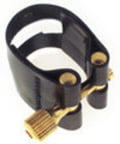
Ligature
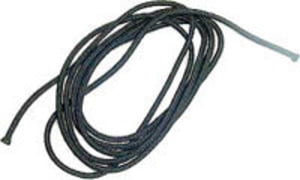
String
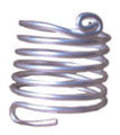
Snake ligature
String
This is the most traditional way of fixing a reed to the mouthpiece. The string is wound around mouthpiece and reed. This allows the reed to vibrate in the best possible manner. But you need some experience to achieve success with this way of affixing the reed.
The quickest and simplest method is to use a ligature. Here, too, the choice is as varied as it is with mouthpieces. They are available in leather, plastic or metal. The simplest version looks like a simple clamp which is fastened with two screws, but nowadays ligatures with one screw, which allow for single-handed fastening of the reed to the mouthpiece, have replaced them. More sophisticated models have a dedicated reed surface which can be made from rubber or metal and takes different shapes. According to the manufacturers, specific surface shapes facilitate playing short notes or quick scales. But many factors contribute to the choice of the right ligature, too, and the best way to find the right one is to try out a few. If you are looking for a top-of-the-range model, check out Vandoren's offerings.
If you play with a string, you need to decide whether to continue to do so before buying a new mouthpiece. Many mouthpieces are available for either ligature or string.
A sort look may suffice
- A layman can easily spot the difference between clarinet or saxophone mouthpieces by looking at the bottom part: if there's a cork-covered peg, you're looking at a clarinet mouthpiece.
- Is the clarinet mouthpiece intended for string or a ligature? Simple: if it is smooth throughout, it is intended for ligatures; if it has a grooved section, it is intended for strings.
- Of you have a number of mouthpieces to select from and are not sure which ones have the bigger openings, don't despair: look at the distance between the reed tip and the mouthpiece tip rail, and you have your answer: the wider the distance, the larger the opening.






